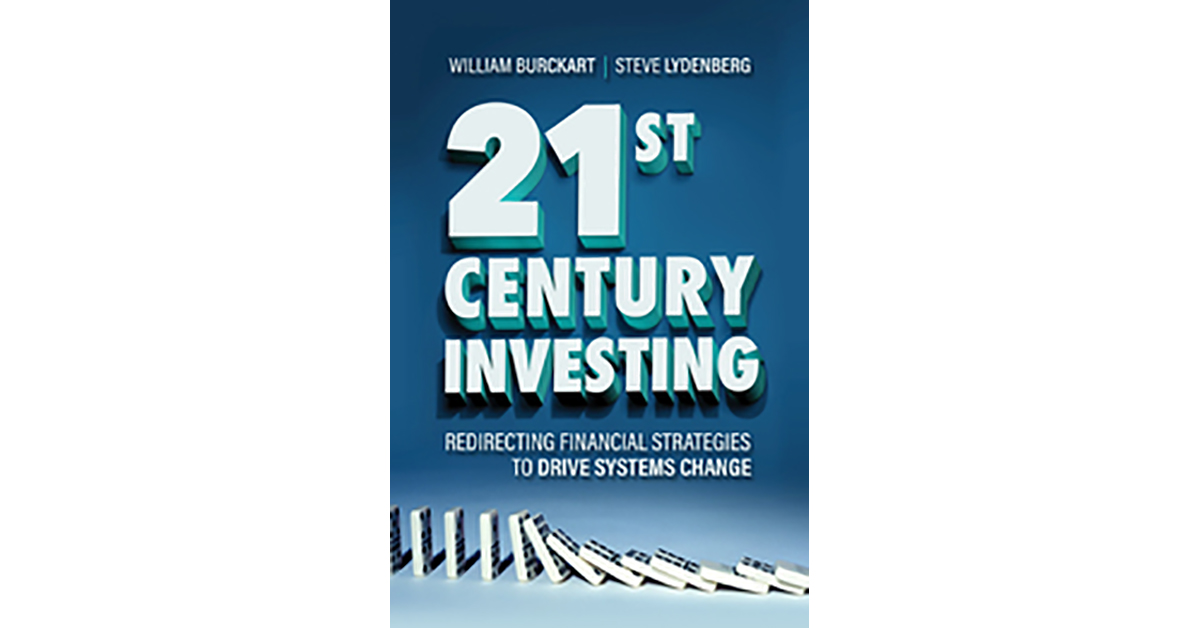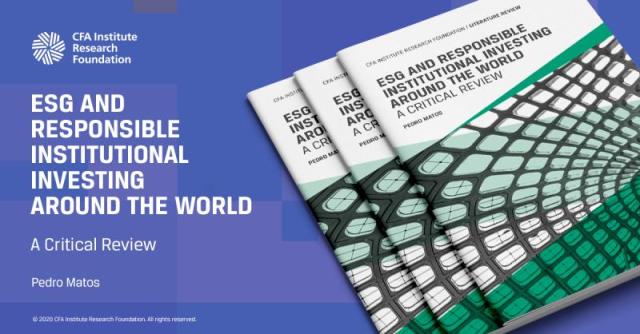[ad_1]
21st Century Investing: Redirecting Financial Strategies to Drive Systems Change. 2021. William Burckart and Steve Lydenberg, CFA. Berrett-Koehler Publishers, Inc.
Responsible investing, sustainable investing, impact investing, social investing, ethical investing, ESG (environmental, social, and governance) investing — labels abound for the space in which investors add nonfinancial considerations to the traditional management of risk and return. Now we can add a further term, “system-level investing,” the key theme of 21st Century Investing: Redirecting Financial Strategies to Drive Systems Change. The authors, William Burckart and Steve Lydenberg, CFA, are co-founders of TIIP, the Investment Integration Project.
The
book characterizes investors as conventional, sustainable, or system level.
“Systems” are classified as either social, financial, or environmental and
include areas as diverse as consumer safety (social), fair and honest markets
(financial), and climate stability (environmental). Conventional investors are
described as aiming “to maximize returns in as short a time as possible.”
Sustainable investors “seek ESG benefits along with their financial returns,”
but system-level investors go further by setting “explicit goals for their
impact upon systems.”
Burckart
and Lydenberg argue persuasively that systemic issues have important
implications for future returns. For example, they refer to a report from the
Cambridge Centre for Risk Studies that suggests that social unrest associated
with unemployment among “millennials” could reduce the value of US equity
portfolios by as much as 23%. Issues such as water quality and climate change
can likewise affect investment outcomes or present a systemic risk. Investors
should take heed.
The
book sets out a roadmap for becoming a system-level investor with six specific
steps:
- Leverage Advanced Techniques.
These steps are described in some detail, and examples of how best-in-class investors are currently implementing them are presented. Essentially, system-level investing is an evolution of responsible or sustainable investing that considers not just how ESG factors affect an investor’s portfolio but also how investors can affect the wider world, for better or worse.
21st
Century Investing might be most valuable when
illustrating theory with practical examples. It presents interesting case
studies on ways in which investors focus on long-term value creation (Norges
Bank Investment Management), the integration of ESG (Allianz), and how to
influence public policy (CalPERS and Aviva Investors). Clearly, what is
achievable depends on size. A “universal owner,” such as Japan’s Government
Pension Investment Fund, can exert influence over external managers and other
investors in ways that small investors cannot.
An oddity in the book
is the paucity of references to governance, the G in ESG. Standard approaches
to ESG can put governance on a par with environmental and social factors. The
International Corporate Governance Network relates governance to long-term value
creation, sustainable economies, social prosperity, and a healthy environment,
interests shared by this book’s authors. The absence of governance from 21st Century Investing begs questions
about how investors can be assured of the delivery of social and environmental
commitments if the strength of governance is unknown.
Another quibble is with the lack of hard data about the size of the sustainable investing universe. The reader will not learn from this book how well developed the worlds of sustainable and system-level investing are in comparison with that of conventional investing. No mention is made of the more than $100 trillion managed by the signatories to the United Nations’ PRI (Principles for Responsible Investing) nor of how sustainable investment has reached $35.3 trillion in assets under management in five major markets in 2020, as reported by the Global Sustainable Investment Alliance (GSIA). Numbers such as these would demonstrate that sustainable and system-level investment already constitute a significant part of the global investment universe.
Although the book
refers to a flagship movement, much of what is discussed will already be
familiar to many investors.
- System-level investing seems closely related to impact investing, which the GSIA defines as “investing to achieve positive social and environmental impacts.”
- Portions of the six-step roadmap echo other frameworks, such as the PRI’s “Investing with SDG Outcomes” (Step 1: Identify Outcomes, Step 2: Set Policies and Targets, etc.).
- Many of the techniques described can be found in a standard ESG toolbox. The authors put the label “Diversity of Approach” on actions taken by New Zealand Superannuation, but the combination of ESG integration, monitoring of managers, research, engagement, industry collaboration, and so on, reads like a standard collection of sustainable investing tools.
Little attention, moreover, is given to difficulties experienced by many sustainable investors, including data inconsistency and the problem of “greenwashing.”
This book deals with important issues. One of its strengths is that it clearly articulates why nonfinancial considerations should be included in investment analysis. Furthermore, it presents an array of tools that can facilitate the integration of these considerations into the investment decision-making process and help the investment community play an important role in ameliorating social and environmental problems. These tools might be familiar to experienced sustainable investors, but the book nonetheless admirably describes an evolution in investing that is likely to have a profound impact on the world in the 21st century.
If you liked this post, don’t forget to subscribe to the Enterprising Investor.
All posts are the opinion of the author. As such, they should not be construed as investment advice, nor do the opinions expressed necessarily reflect the views of CFA Institute or the author’s employer.
Professional Learning for CFA Institute Members
CFA Institute members are empowered to self-determine and self-report professional learning (PL) credits earned, including content on Enterprising Investor. Members can record credits easily using their online PL tracker.
[ad_2]
Image and article originally from blogs.cfainstitute.org. Read the original article here.




